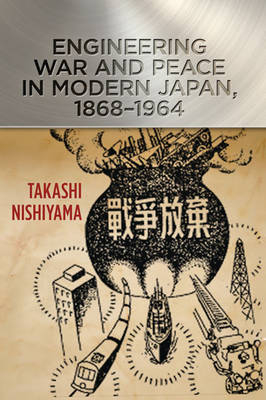
Engineering War and Peace in Modern Japan, 1868–1964
Johns Hopkins University Press (Verlag)
978-1-4214-1266-5 (ISBN)
- Titel z.Zt. nicht lieferbar
- Versandkostenfrei
- Auch auf Rechnung
- Artikel merken
What does this change tell us not only about Japan at war and then in peacetime but also about the malleability of engineering cultures[unk] Nishiyama aims to counterbalance prevalent Eurocentric/Americentric views in the history of technology. Engineering War and Peace in Modern Japan, 1868-1964 sets the historical experience of one country's technological transformation in a larger international framework by studying sources in six different languages: Chinese, English, French, German, Japanese, and Spanish. The result is a fascinating read for those interested in technology, East Asia, and international studies. Nishiyama's work offers lessons to policymakers interested in how a country can recover successfully after defeat.
Takashi Nishiyama is an assistant professor of history at the State University of New York, Brockport.
Acknowledgments
Notes on Transliteration
Introduction Technology and Culture, War and Peace
1. Designing Engineering Education for War, 1868–1942
2. Navy Engineers and the Air War, 1919–1942
3. Engineers for the Kamikaze Air War, 1943–1945
4. Integrating Wartime Experience in Postwar Japan, 1945–1952
5. Former Military Engineers in the Postwar Japanese National Railways, 1945–1955
6. Opposition Movements of Former Military Engineers in the Postwar Railway Industry, 1945–1957
7. Former Military Engineers and the Development of theShinkansen, 1957–1964
Conclusion: Legacy of War and Defeat
A Note on the Appendix and Sources
Appendix: List of Informants
Notes
Bibliography
Index
| Erscheint lt. Verlag | 10.6.2014 |
|---|---|
| Reihe/Serie | Johns Hopkins Studies in the History of Technology |
| Zusatzinfo | 9 Halftones, black and white |
| Verlagsort | Baltimore, MD |
| Sprache | englisch |
| Maße | 152 x 229 mm |
| Gewicht | 499 g |
| Themenwelt | Geschichte ► Allgemeine Geschichte ► Neuzeit (bis 1918) |
| Geisteswissenschaften ► Geschichte ► Regional- / Ländergeschichte | |
| Geschichte ► Teilgebiete der Geschichte ► Technikgeschichte | |
| Technik | |
| ISBN-10 | 1-4214-1266-7 / 1421412667 |
| ISBN-13 | 978-1-4214-1266-5 / 9781421412665 |
| Zustand | Neuware |
| Haben Sie eine Frage zum Produkt? |
aus dem Bereich


